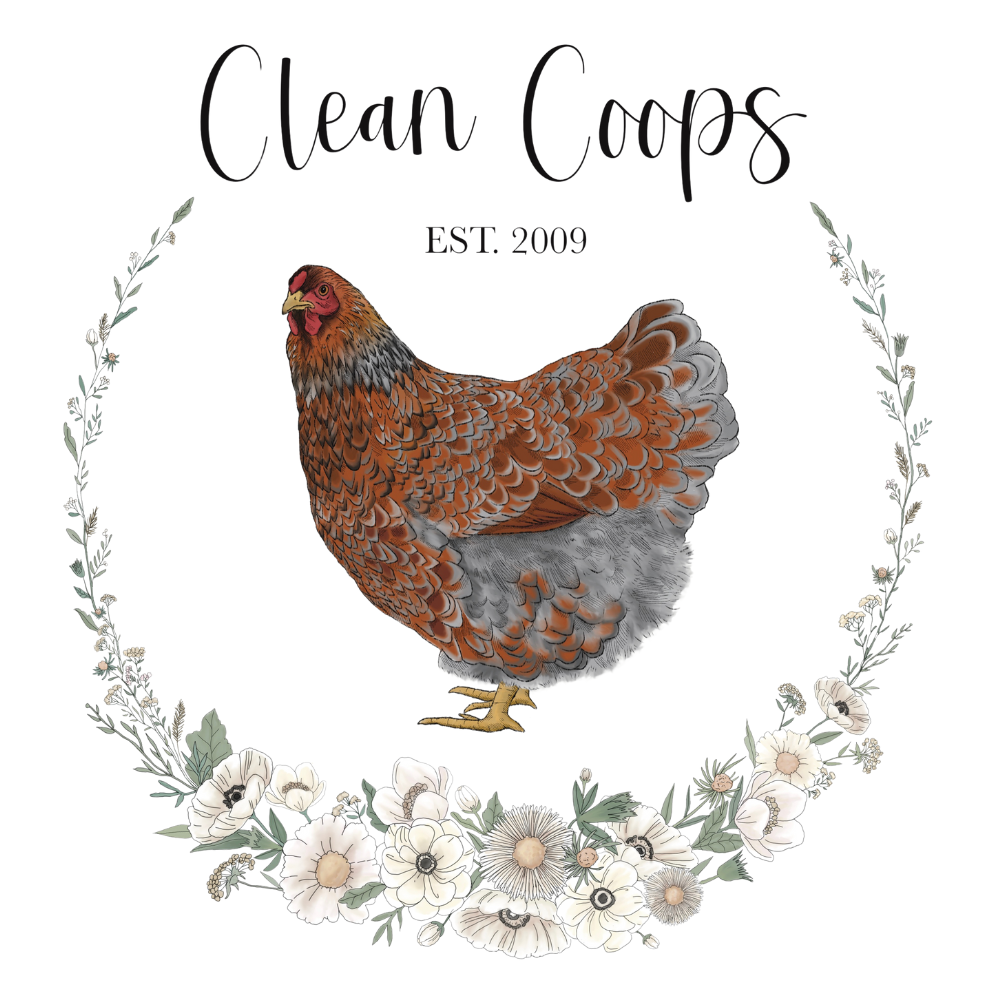Chicken Care
Chick Care - Nutrition - Helpful tips
Helpful Poultry Definitions
Chick: A baby chicken at the fluffy downy stage.
Poult: Young poultry or fowl.
Pullet: A young female chicken at least 20 weeks old which has begun to lay eggs but has not yet moulted.
Cockerel: Immature male chickens of less than a year's age.
Rooster: Sometimes called a 'Cock' is an adult male chicken over a year old.
Hen: Female chicken that has begun to lay eggs or is over 12 weeks of age.
Layer: A chicken that lays eggs.
Bantam: A small variety of chicken or miniature breeds.
Standard Poultry: The American standard, official breed standard for poultry in North America.
Caring For Baby Chicks
So you're thinking about getting sweet little baby chicks. Here are a few tips to keep them healthy and happy. Remember, good egg layers begin with proper care when they are babies. There is a real advantage of raising your own chicks: you control their diet, medication, and everyday care. Be careful buying grown chickens from different places. Ask questions about their diet and vaccinations before you buy them.
Usually, a minimum order of 25 chicks is required if you purchase online from a hatchery. Ordering with a neighbor is a good way to get the breeds you want without paying for all 25. Your local farm and ranch supply stores will also carry chicks in the spring. They supply a good variety of the top egg laying breeds with no minimum purchase.
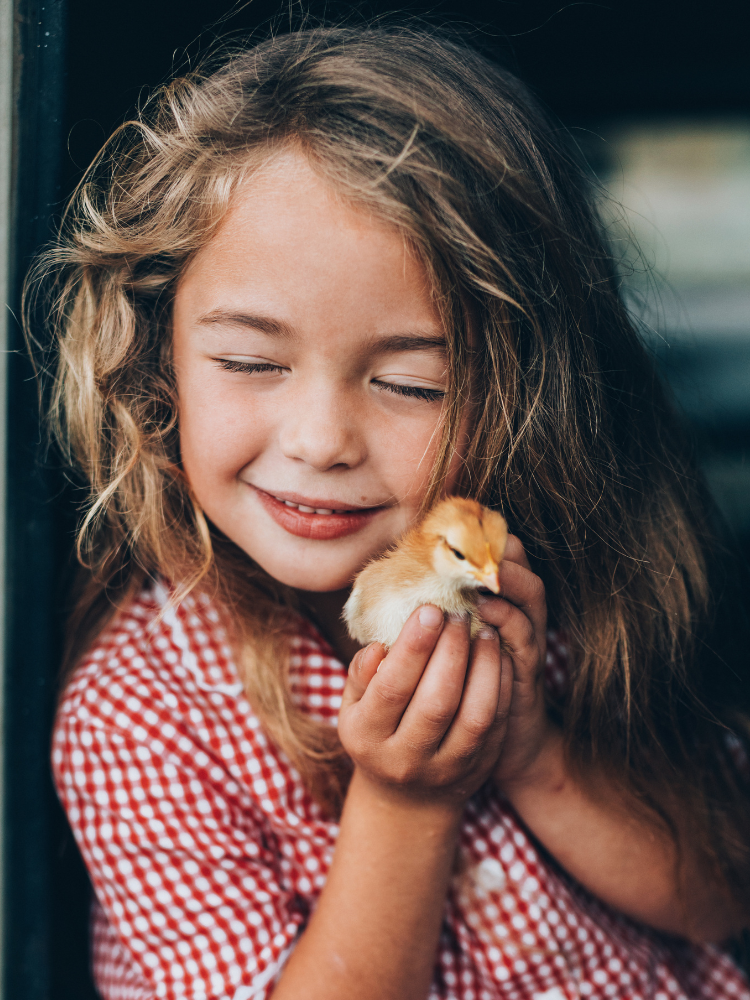
Here is what you will need to get started with your new baby chicks:
Brooder: A safe and warm enclosure for the chicks, we use a cardboard box, but you can also use a large plastic storage container, or a commercially available brooder. Make sure the sides are high enough that the chicks can’t jump out, at least 12 inches.
Heat Source: A heat lamp or heating plate to maintain a comfortable temperature. Make sure to select 250 watts so it stays warm enough, initially around 90 degrees Fahrenheit and decreasing gradually. I like the red bulbs to reduce the urge for feather pecking in chicks. Red light is also helpful for egg production and sexual maturity. They will no longer need a light once all their adult plumage has come in. Heat lamps should be 18" from the bottom and sides of the brooder.
Chick Starter Feed: A specially formulated feed with a high protein content to support their rapid growth. Choose a crumble that is 20% protein or higher. We also give our chicks medicated feed for the first 16 weeks.
Water: Clean, fresh water available all the time. You can use a mason jar at first, with a little screw-on tray for a few dollars. The trays are available at any ranch supply store. As the chicks grow you can graduate to a larger poultry fountain. When the chicks are a couple weeks old, set the fountain on top of something like a brick so the chicks don’t scratch their shavings in the water.
Bedding: Pine shavings are great to keep the chicks warm and dry. Avoid cedar shavings, they have toxins that can cause liver damage and respiratory problems.
Thermometer: To accurately monitor the temperature inside the brooder. It is very important to keep the temperature around 90 degrees and then decrease 3-5 degrees each week until it is 75 degrees.
Feeding Schedule
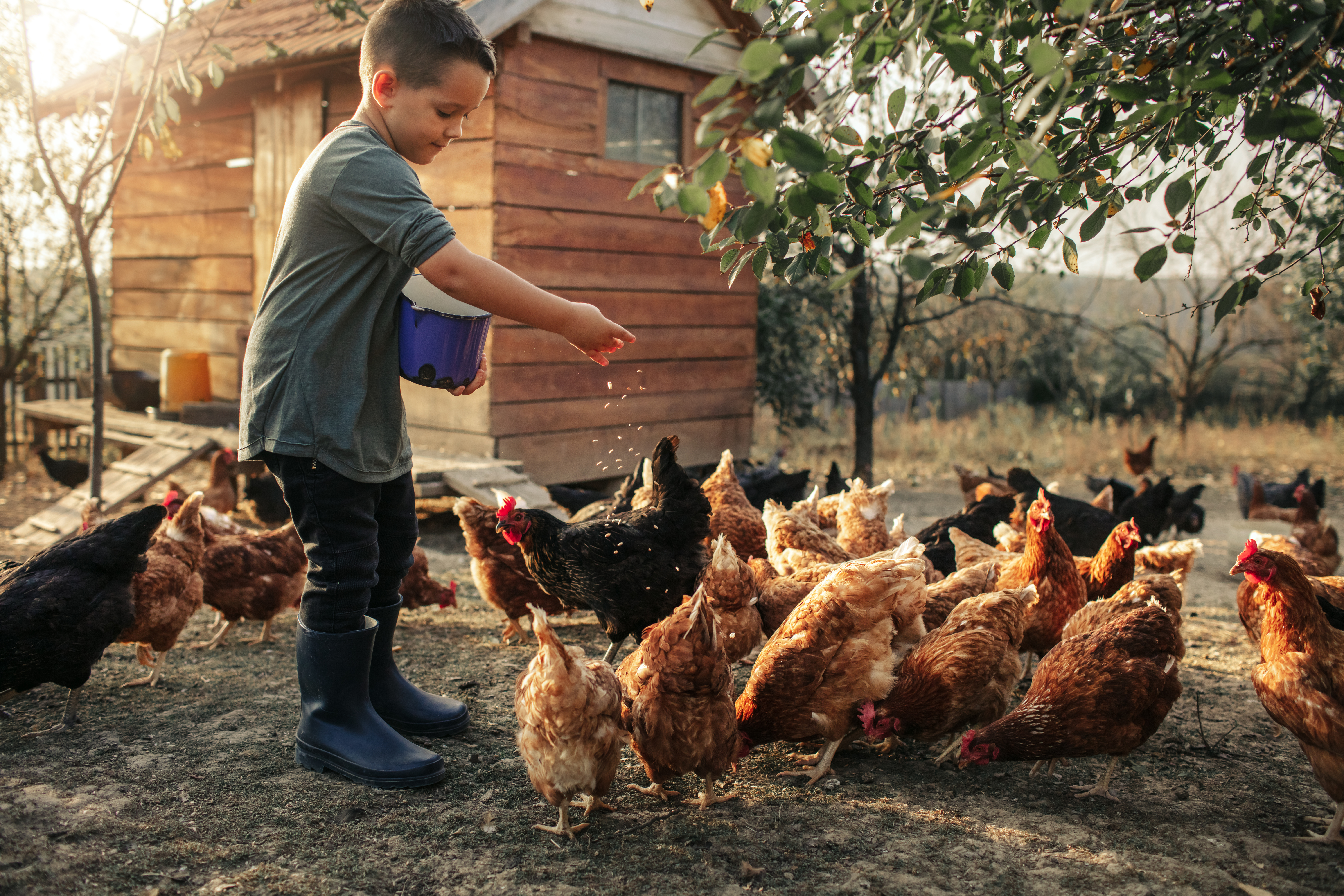
0-6 weeks: 20-21% protein chick starter
6-10 weeks: 16-19% protein pullet grower
18-22 weeks at onset of egg production: 16-18% protein layer diet (20% layer feed is fine for free range hens.) As soon as hens begin to lay, offer oyster shell as a free choice, available at all times during the day.
Dual-purpose breeds like Plymouth Rock, Rhode Island Red,Delaware, etc:
0-6 weeks: 20-21% protein chick starter
6 weeks prior to egg production: 15-19% protein pullet grower/developer
At onset of egg production: 16-18% protein layer diet (20% layer feed is fine for free range hens..especially heavy breeds.) As soon as hens begin to lay, offer oyster shell as a free choice, available at all times during the day.
Giving your hens the proper feed diet will help with egg production and overall health. I add 5% food grade Diatomaceous Earth to my hens feed as a de-wormer. They have a great feed conversion ratio and lay great!
Chicken Care During the Winter
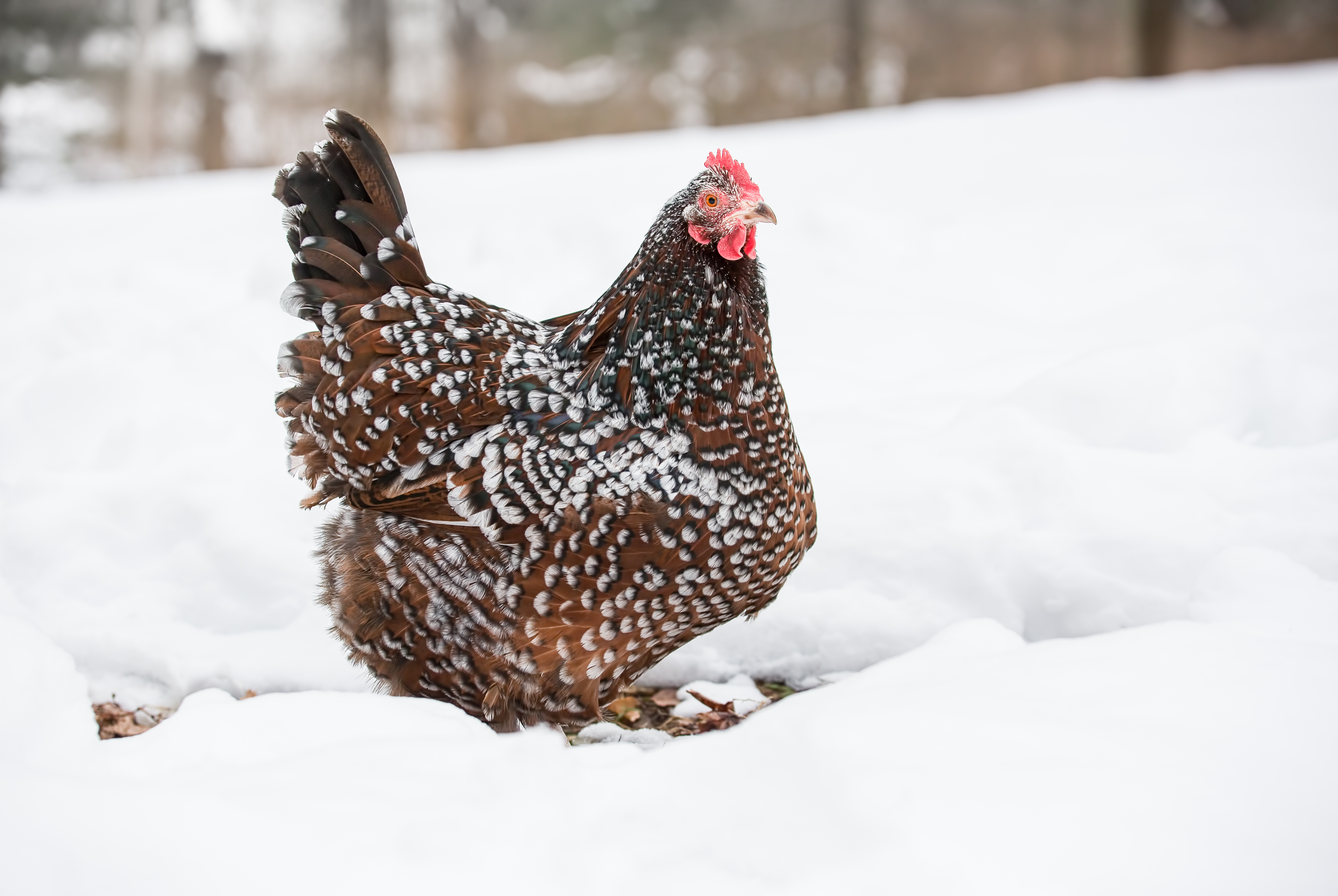
Providing your hens with the nutrition they need in winter will help them maintain a healthy weight to keep them warm. Chickens actually do very well in the cold and still love to get outside. Give them extra greens in the colder months when grass is not available. Hang some broccoli or lettuce inside the coop for them to peck at. Throw some scratch grains or whole wheat in the afternoon for them to peck around and get some exercise. This will also stay in the crop while they are roosting and keep them fuller and help them keep warm. Put a little Vaseline on their comb and toes to help reduce frost bite.
If you would like your hens to keep laying in the winter, provide them with a light source. Chickens eyes cannot adjust to darkness very fast, so set a timer for the light, early enough for the hens to have about 14 hours of light. Let the sunset put them to bed naturally so their eyes can adjust to the darkness and they will go to roost. Chickens metabolism slows down in the winter and they keep warm very well on their own! If you are worried about them being cold, you can keep a heat lamp in your coop on especially cold days. You have to be careful not to cause condensation (from the heat) inside the coop which can cause frost in areas. The heat lamp will not heat up the entire coop, just a small area if the hens decide to use it.
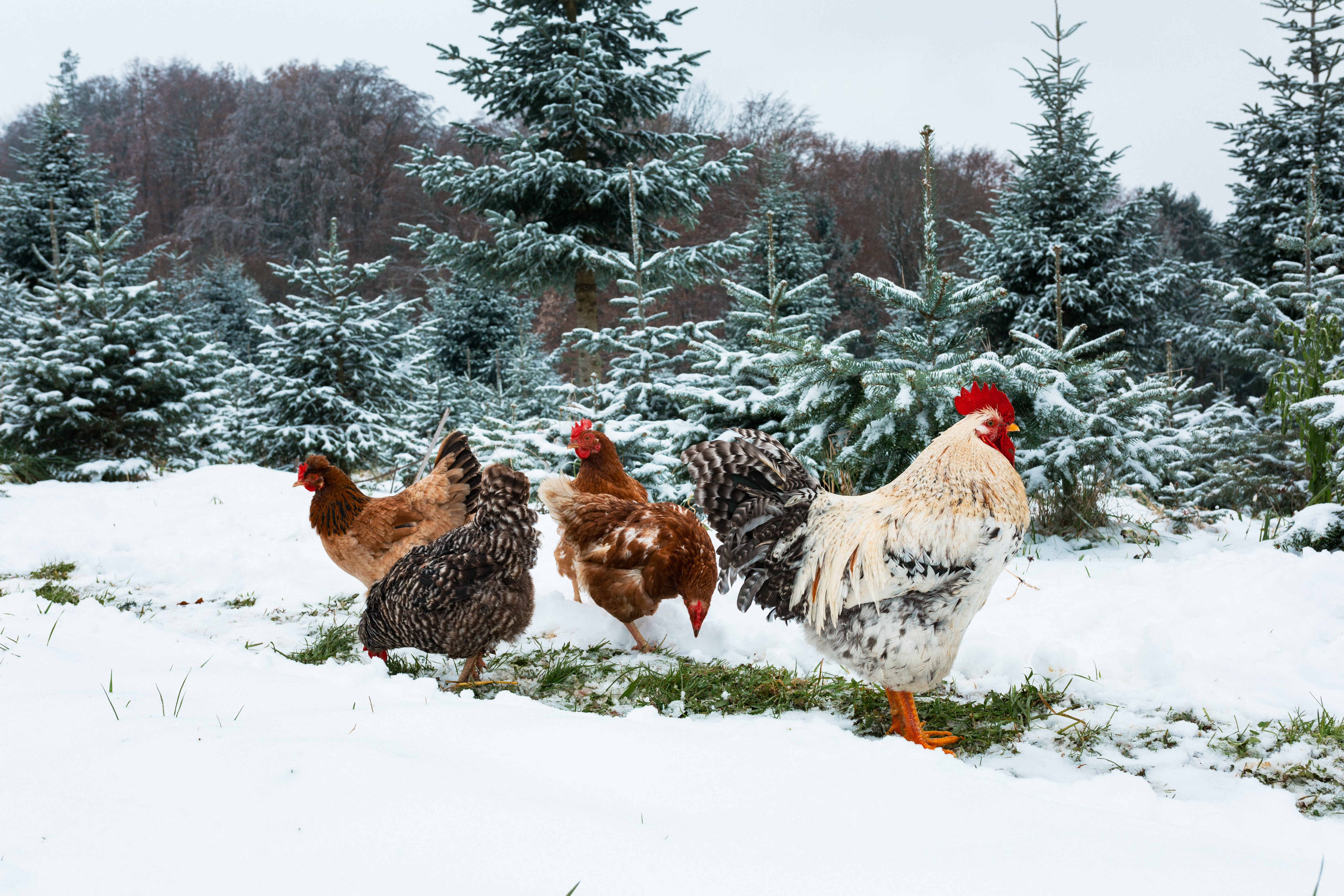
Do Chickens Need Heat Lamps in Winter? Nope! Chickens are naturally built to handle the cold. As the seasons change, they gradually acclimate to lower temperatures. With their fluffy feathers and the habit of huddling together at night, they stay cozy on their own. The key is choosing cold-hardy breeds and providing a dry, draft-free coop—no heat lamp needed!
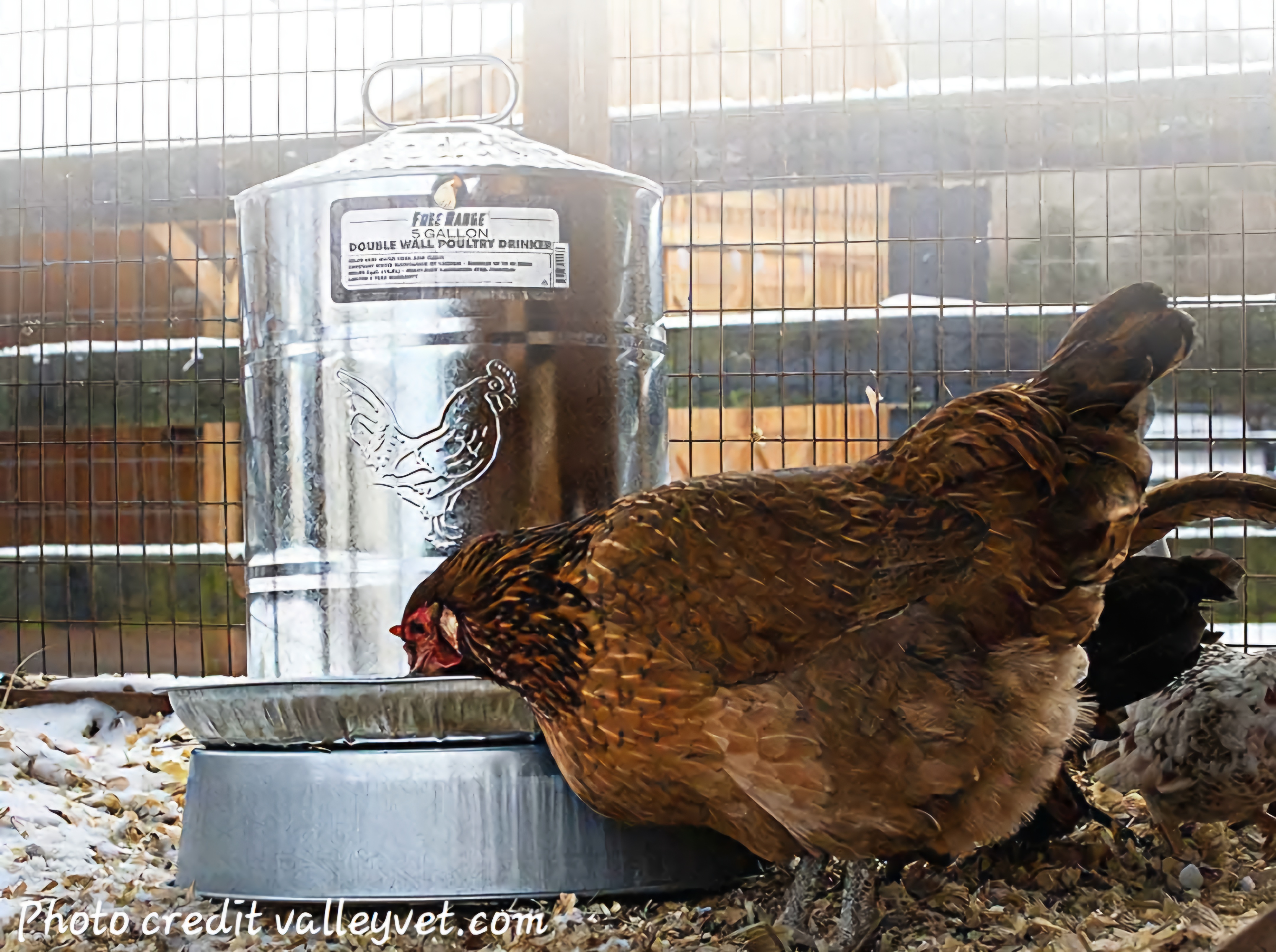
There are a few homemade ways to keep your hens water from freezing. I like the poultry fountains with a heating element in the bottom tray. You can plug it into an outlet (using an extension cord if needed) and it keeps the water from freezing.
Some may give a little extra vitamin D to help egg production. I find they have enough in their grain if purchased from a ranch store. It already has all the vitamins in the feed, so giving extra vitamin D is optional but might be a good idea if you want more eggs in winter.
Chickens naturally slow down their laying in the winter not just because of the cold, sometimes they will go through a molt depending on the age and breed. Molting usually begins around 18 months of age and can last 3-4 months or longer. The hens go this process of loosing old feathers and gaining new ones. Your hens will molt about the same time once a year (depending on the breed, it could be twice a year.) After the molt, egg laying goes back to normal.
Another thing I do is uncover the snow around the fence where the dirt is so they can have some grit. It is harder for the hens to find the grit they need in the winter, so make sure you provide them with it. Continue to offer oyster shell as a free choice but not as a substitute to grit. Also...Let them out! Chickens still love to get out and run around, even in the winter! Shovel little paths in the snow for a little play room for your hens. Sometimes you can find grass under the snow for them to eat if they are free ranged.
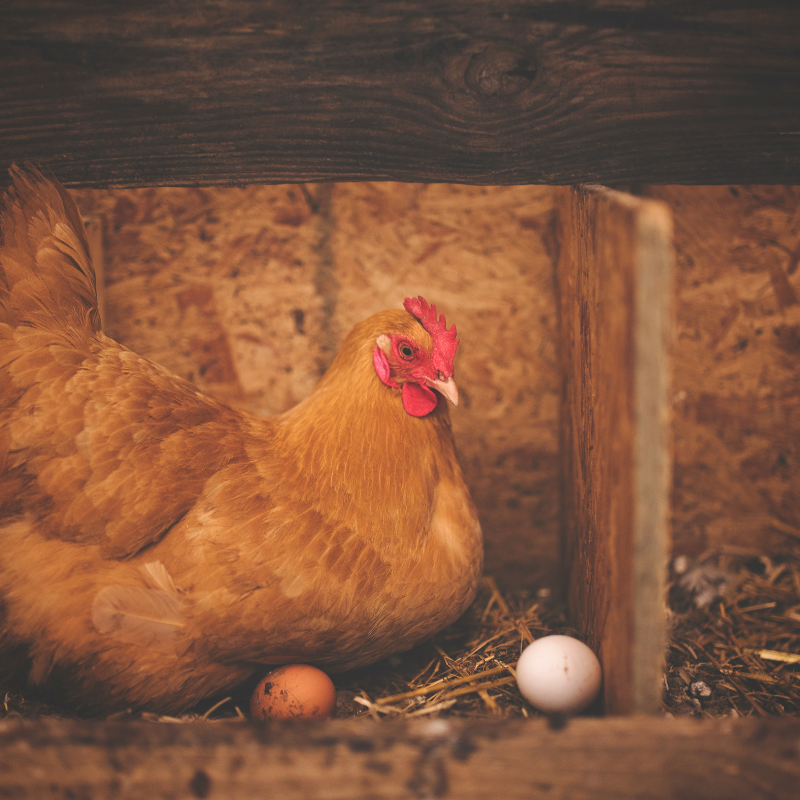
Clipping a Chicken's Wings
Some chickens are more flighty than others and so it becomes necessary to clip their wings, even if you have a chicken run. The best way to do this is to locate the "separating feather" which is a little short feather between the flight feathers and the lower feathers that keep the chicken warm. After locating the separating feather, cut a straight line just slightly above the separating feather. Do not cut too high into the shorter layer of upper feathers or bleeding will occur. Make sure to only cut one side of your chickens wings! This will put you in control of when you want to let your chickens out to free range.
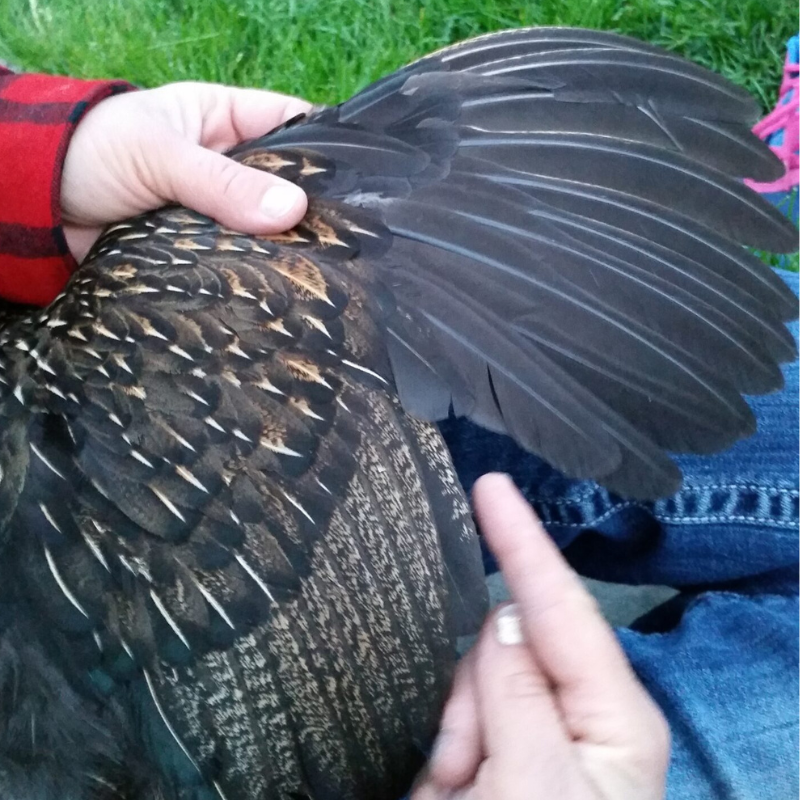
Cut Wing (Only Cut One Wing!)
Short, Separating Feather
Chicken Treats
Raising backyard chickens is a fun and rewarding experience, and giving your flock treats is a great way to bond with them while keeping them happy and healthy. Chickens love snacks just as much as we do, but it’s important to choose treats that are both safe and nutritious. Offering the right treats can also support their egg production, digestion, and overall well-being.
Some of the best treats for chickens are fruits and vegetables. Chopped apples (without seeds), berries, watermelon, cucumber, leafy greens, and pumpkin are all healthy options that your flock will go crazy for. These treats provide essential vitamins and hydration, especially during the warmer months. Just be sure to feed fruits in moderation, as the sugar content can be high.
Grains and protein-rich snacks are also a hit with chickens. Oats, cracked corn, cooked rice, and mealworms are excellent choices—especially during colder weather when chickens need extra calories to stay warm. Scrambled eggs (yes, really!) and plain yogurt can also be offered occasionally to boost their protein and calcium intake. Always avoid giving chickens anything moldy, salty, sugary, or processed, and steer clear of harmful foods like chocolate, avocado, and raw potato peels.
By offering your chickens healthy treats in moderation, you’ll not only keep them entertained but also support their health and productivity. Remember, treats should only make up a small part of their diet—most of their nutrition should still come from a balanced layer feed.
Follow Us
Company
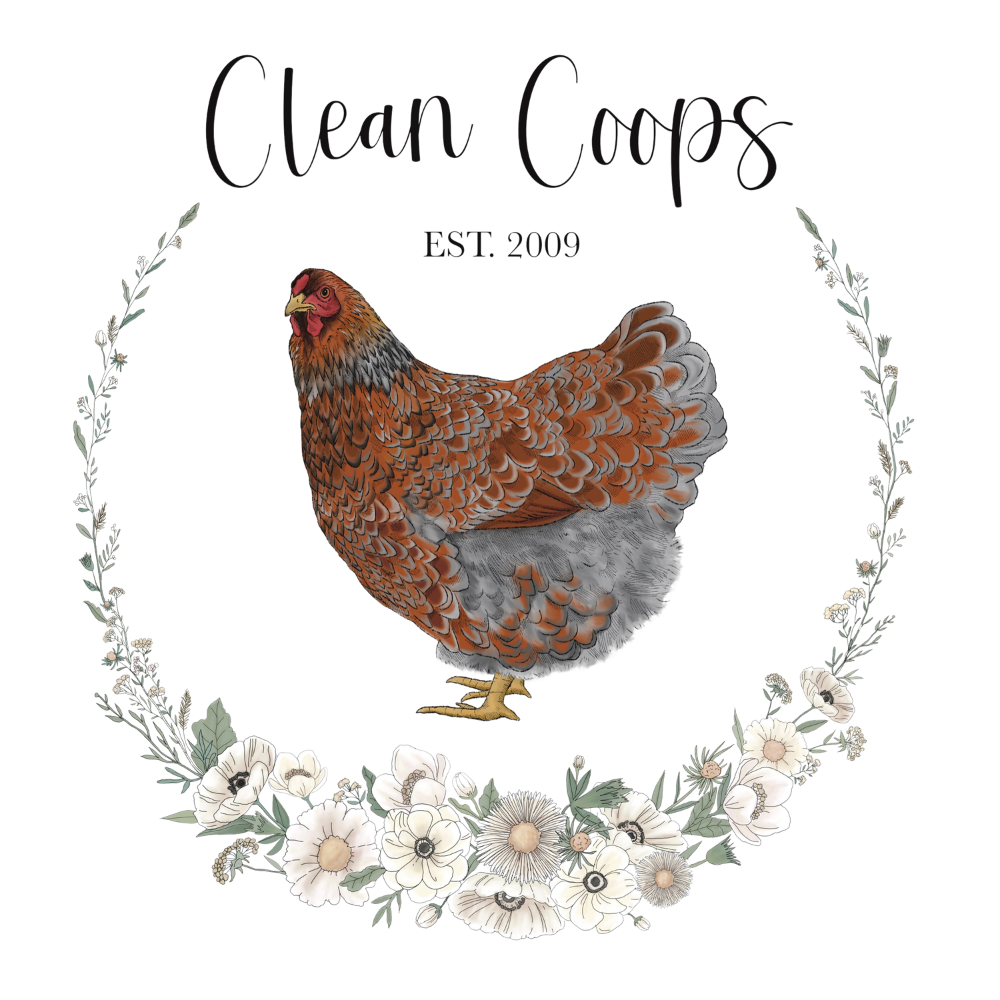
More
Legal
Copyright 2025. Clean Coops. All Rights Reserved.
